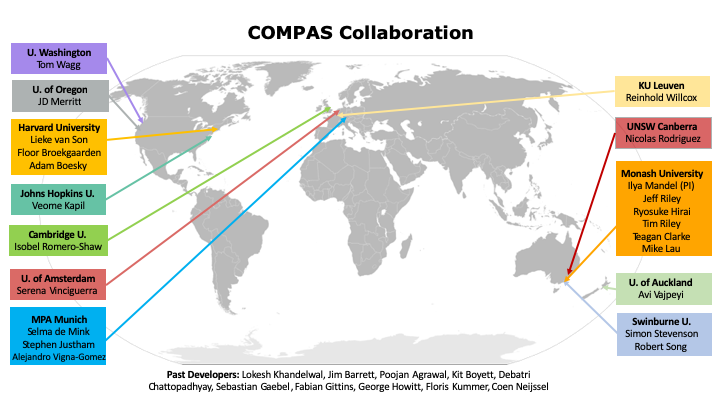Understanding binaries
The life and death of multiple-star systems
The majority of massive stars are now known to be in binary (or higher multiplicity) systems. Interactions between companion stars, often involving transfer of mass, alter the evolution of the individual stars and the binary as a whole. The physical processes involved in binary formation and evolution are currently uncertain; however, observations of astrophysical phenomena associated with different stages of binary evolution can illuminate our understanding. The question is: How do we translate observations into constraints on the physical processes that govern binary systems?
To solve this, we developed Compact Object Mergers: Population Astrophysics and Statistics (COMPAS). COMPAS combines tools for statistical analysis and model selection with rapid population synthesis, allowing inferences to be made about the details of stellar and binary evolution. The COMPAS code is publicly available at https://github.com/TeamCOMPAS/COMPAS. Further information can be found in the COMPAS methods paper or in more technical documentation.

COMPAS was initially created in order to explore the astrophysical implications of gravitational-wave observations . Gravitational waves are emitted during mergers of double compact objects (neutron stars or black holes), and are now detected regularly by the LIGO/Virgo Collaboration. COMPAS uses models of binary stellar evolution to make predictions of the rates and properties of the mergers, which are then validated against the observed population in order to constrain the binary physics.
COMPAS has since expanded to include other observational signatures of binary evolution, including Galactic Double Neutrons Stars, X-ray Binaries, and Luminous Red Novae. Different observations supplement gravitational-wave data to provide new insights into uncertain mechanisms and create a more complete picture of binary astrophysics.

